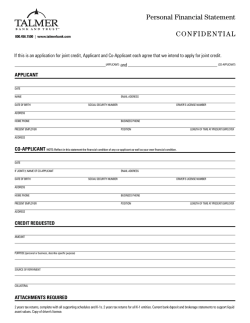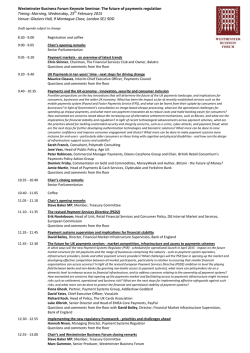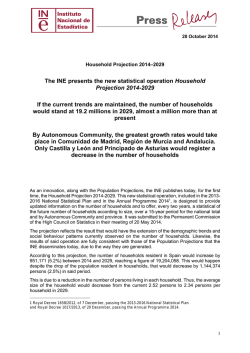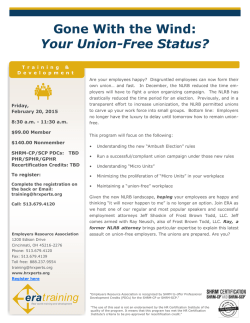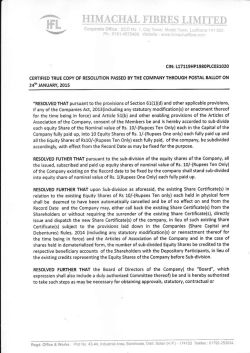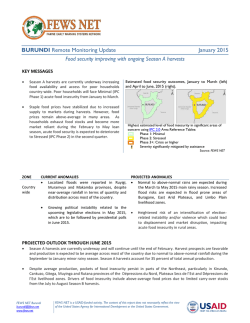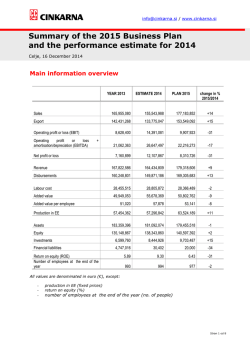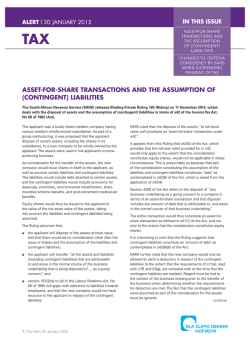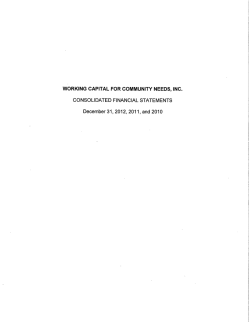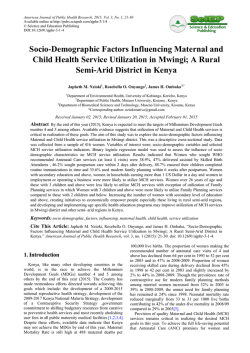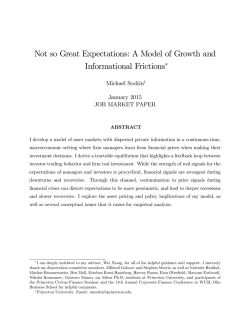
ESA10 Glossary
ESA 2010 Glossary a) Non-Financial Accounts Output (P1) consists of the products created during the accounting period. Three types of output are distinguished in the ESA: i. Market Output (P11) consists of output that is disposed of on the market or intended to be disposed of on the market. ii. Output produced for own final use (P12) consists of goods and services that are retained either for final consumption by the same institutional unit or for gross fixed capital formation by the same institutional unit. iii. Other non-market output (P13) covers output that is provided free, or at prices that are not economically significant, to other units. Intermediate consumption (P2) consists of the value of the goods and services consumed as inputs by a process of production, excluding fixed assets whose consumption is recorded as consumption of fixed capital. The goods and services may be either transformed or used up by the production process. Gross Capital Formation (P5) is the sum of three components: i. Gross fixed capital formation (P51) consists of resident producers’ acquisitions, less disposals, of fixed assets during a given period plus certain additions to the value of nonproduced assets realized by the productive activity of producer or institutional units. Fixed assets are tangible or intangible assets produced as outputs from processes of production that are themselves used repeatedly, or continuously, in processes of production for more than one year. ii. Changes in inventories (P52) are measured by the value of the entries into inventories less the value of withdrawals and the value of any recurrent losses of goods held in inventories. iii. Acquisitions less disposals of valuables (P53) are non-financial goods that are not used primarily for production or consumption, do not deteriorate (physically) over time under normal conditions and that are acquired and held primarily as stores of value. Compensation of employees (D1) is defined as the total remuneration, in cash or in kind, payable by an employer to an employee in return for work done by the latter during the accounting period. Compensation of employees is broken down into wages and salaries in cash and in kind (D11) and employers’ actual (D121) and imputed social contributions (D122). Taxes on production and imports (D2) consist of compulsory, unrequited payments, in cash or in kind which are levied by general government, in respect of the production and importation of goods and services, the employment of labour, the ownership or use of land, buildings or other assets used in production. These taxes are payable whether or not profits are made. Taxes on production and imports are divided into: i. Taxes on products (D21) are taxes that are payable per unit of some good or service produced or transacted. The tax may be a specific amount of money per unit of quantity of a good or service, or it may be calculated ad valorem as a specified percentage of the price per unit or value of the goods and services produced or transacted. As a general principle, taxes in fact assessed on a product, irrespective of which institutional unit pays the tax, are included in taxes on products, unless specifically included in another heading. (a) value-added-type taxes (VAT) (D211) is a tax on goods and services collected in stages by enterprises and which is ultimately charged in full to the final purchasers (b) taxes and duties on imports; except VAT (D212) – comprise compulsory payments levied by general government or the Institutions of the European Union on imported goods, excluding VAT, in order to admit them to free (c) ii. circulation on the economic territory, and on services provided to resident units by non-resident units. taxes on products, except VAT and import taxes (D214) – consist of taxes on goods and services that become payable as a result of the production, export, sale, transfer, leasing or delivery of those goods or services, or as a result of their use of their use for own capital consumption. Within the local context this refers to excise duties. Other taxes on production (D29) consist of all taxes that enterprises incur as a result of engaging in production, independently of the quantity or value of the goods and services produced or sold. They may be payable on the land, fixed assets or labour employed in the production process or on certain activities or transactions (mainly operating licences). Subsidies (D3) are current unrequited payments made by general government to resident producers with the objective of influencing their levels of production, their prices, or the remuneration of the factors of production. Subsidies are not payable to final consumers; and any current transfers made by government directly to households as consumers are treated as social benefits. Property income (D4) is the income receivable by the owner of a financial asset or a tangible nonproduced asset in return for providing funds to, or putting the tangible non-produced asset at the disposal of, another institutional unit. Property incomes can be interest (D41), distributed income of corporations (D42) and rents (D45). Current taxes on income and wealth (D5) cover all compulsory, unrequited payments, in cash or in kind, levied periodically by general government on the income and wealth of institutional units, and some periodic taxes which are assessed neither on the income nor the wealth. Current taxes on income, wealth are: i. Taxes on income (D51) consist of taxes on income, profits and capital gains. They are assessed on the actual or presumed incomes of individuals, households, corporations or NPIs. They include taxes assessed on holdings of property, land or real estate when these holdings are used as a basis for estimating the income of their owners. ii. Other current taxes (D59). Include: Current taxes on capital that are payable on the ownership or use of land or buildings by owners, and current taxes on net wealth and on other assets except taxes mentioned in D.29 and D.51; Poll taxes, levied per adult or per household, independently of income or wealth; Expenditure type taxes, payable on the total expenditures of persons or households; Payments by households for licences to own or use vehicles, boats or aircraft, or for licences to hunt, shoot or fish, etc; Taxes on international transactions (travel abroad, foreign remittances, foreign investments, etc), except those payable by producers and import duties paid by households. Net Social Contributions (D61) consists of: i. Employers’ actual social contributions (D611) are paid by employers to social security funds. ii. Employers’ imputed social contributions (D612) are paid directly by employers (i.e. not linked to employers’ actual contributions) to their employees or former employees and other eligible persons. iii. Households’ actual social contributions (D613) are social contributions payable for their own benefit by persons who are not employees – namely self-employed persons or nonemployed persons. iv. Households’ social contribution supplements (D614) represent the property income earned during the accounting period on the stock of pension and non-pension entitlements. Social benefits other than social transfers in kind (D62) are made up of: i. Social security benefits in cash (D621) are payable to households by social security funds. ii. Other social insurance benefits (D622) are payable by employers in the context of other employment related social insurance schemes. iii. Social assistance benefits in cash (D623) are payable to households by government units or NPISHs to meet the same needs as social insurance benefits but which are not made under a social insurance scheme requiring participation usually by means of social contributions. Social transfers in kind (D63) consist of individual goods and services provided as transfers in kind to individual households by government units, whether purchased on the market or produced as nonmarket output by government units. They may be financed out of taxation, other government income or social security contributions. Other current transfers (D7) can be non-life insurance claims (D72), current transfers within general government (D73), current international cooperation (D74), miscellaneous current transfers (D75) and VAT and GNI-based EU own resources (D76). Capital transfers (D9) are different from recurrent transfers by the fact that they involve the acquisition or disposal of an asset, or assets, by at least one of the parties to the transaction. Whether made in cash or in kind, they should result in a commensurate change in the financial, or non-financial, assets shown in the balance sheets of one or both parties to the transaction. Capital transfers cover: i. Capital taxes (D91) – taxes on capital transfers: inheritance taxes, death duties and taxes on gifts. ii. Investment grants (D92) – consist of capital transfers in cash or in kind made by government or by the rest of the world to other resident or non-resident institutional units to finance all or part of the costs of their acquiring fixed assets. iii. Other capital transfers (D99) Acquisition less disposals of non-produced assets (NP) consists of land and other tangible nonproduced assets that may be used in the production of goods and services, and intangible nonproduced assets. This component is included in Gross Fixed Capital Formation. Final Consumption Expenditure by General Government includes two main categories of expenditures: i. The value of goods and services produced by general government other than ownaccount capital formation and sales. ii. Purchases by general government of goods and services produced by market producers that are supplied to households – without any transformation – as social transfers in kind. Final consumption expenditure by government is calculated as: plus plus = minus minus plus = Intermediate consumption Compensation of employees Consumption of fixed capital Output Market Output Output for own final use Social transfers in kind via market producers General Government Final Consumption Expenditure b) Financial Accounts Flows reflect the creation, transformation, exchange, transfer or extinction of economic value that take place within a given period of time. They involve changes in the value of an institutional unit's assets or liabilities. Transaction is an economic flow that is an interaction between institutional units by mutual agreement or an action within an institutional unit that it is useful to treat as a transaction, often because the unit is operating in two different capacities. Revaluations are changes in the value of assets and liabilities due to changes in their prices. Market Value is the price as determined dynamically by buyers and sellers in an open market. For EDP purposes, nominal value is assimilated to the “face value” (also referred to as “value at par”), whereas the valuation in ESA 2010 balance sheets is the market value, when appropriate. ESA 2010 includes a clarification on valuation principles. ESA 2010 7.39 specifies: “nominal valuation reflects the sum of funds originally advanced, plus any subsequent advances, less any repayments, plus any accrued interest. Nominal value is not the same as face value”. In simple terms, for a debt security, the nominal value is equal to the issue price (above or below par, any premium or discount being spread over the lifetime of the instrument) plus any interest that has accrued but has not yet been paid (interest is typically paid regularly – annually or every six months – or only at time of redemption, as is the case for short term debt instruments). Other changes in volume are flows other than those that occur through transactions and revaluations recorded in the capital and financial accounts, that change the value of assets and liabilities. These include flows that allow assets and liabilities to enter or leave the accounts other than by transactions (for example, entrances and exits of the discovery, depletion and degradation of natural assets). They also include the effect of exceptional, unanticipated external events that are not economic in nature, and changes resulting from reclassification or restructuring of institutional units or assets and liabilities. Financial assets and liabilities (AF). Financial assets are economic assets, comprising all financial claims, equity and the gold bullion component of monetary gold. Financial liabilities are established when debtors are obliged to provide a payment or a series of payments to creditors. Currency and deposits (AF.2) are currency in circulation and all types of deposits, both in national currency and in foreign currency which include notes and coins (cash in hand), deposits exchangeable for currency on demand (transferable deposits) and deposits that cannot be used to make payments except on maturity or after an agreed period of notice (other deposits). Debt securities (AF.3) are negotiable financial instruments serving as evidence of debt. Negotiability refers to the fact that its legal ownership is readily capable of being transferred from one owner to another by delivery or endorsement. To qualify as negotiable, a security must be designed for potential trading on an organised exchange or in the over-the counter market, though demonstration of actual trading is not required. Short-term debt securities (AF.31) are mainly treasury bills and other short-term paper issued by general government whose original maturity is normally one year or less and debt securities repayable on demand of the creditor. Long-term debt securities (AF.32) include bonds, debentures, loan stock convertible into shares, and government stocks whose original maturity is normally more than one year or of no stated maturity. Loans (AF.4). Financial assets created when creditors lend funds to debtors, either directly or through brokers, which are either evidenced by non-negotiable documents or not evidenced by documents. This category is divided into two sub-categories being short-term (one year or less and loans repayable on demand) and long-term loans (more than one year or no stated maturity). Equity and investment fund shares and units (AF.5). Financial assets that represent property rights on corporations or quasi-corporations. Such financial assets generally entitle the holders to a share in the profits of the corporations or quasi-corporations, and to a share in their net assets in the event of liquidation. Shares and other equity on the liability side are not recorded; it means that no government unit is owned by any entity classified in other institutional sector. It includes both listed and unlisted shares and any other equity. Listed shares are equity shares listed on a recognised stock exchange or other form of secondary market. Unlisted shares are those whose prices are not listed on a recognised stock exchange or other form of secondary market. Financial derivatives (AF.71) include options, forwards and credit derivatives, and are financial instruments linked to a specified financial instrument or indicator or commodity, through which specific financial risks can be traded in financial markets in their own right. Other accounts receivable/payable (AF.8). Financial assets/liabilities created as counterparts to a financial or a non-financial transaction in cases where there is a timing difference between these transactions and the corresponding payments. It includes trade credits and advances and any other receivables and payables. Trade credits and advances are financial claims arising from the direct extension of credit by suppliers of goods and services to their customers, and advances for work that is in progress or to be undertaken, in the form of prepayment by customers for goods and services not yet provided.
© Copyright 2026
